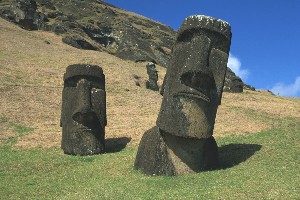
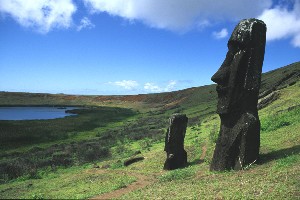
Moais near Rano Raraku Quarry
Moais in Rano Raraku Crater
 |
 |
Moais near Rano Raraku Quarry |
Moais in Rano Raraku Crater |
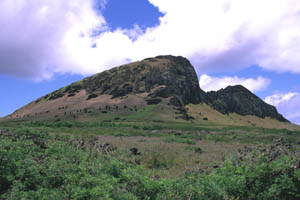 |
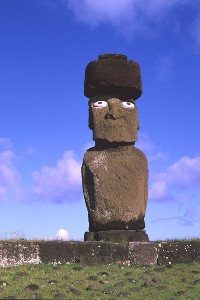 |
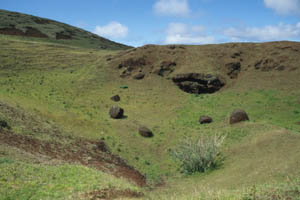 |
Rano Raraku Quarry - All of the Moais Originate from this Location |
Moai Restored to Original Condition with Headknot and Eyes |
Puna Pao Quarry, Source of the Moai Headknots. |
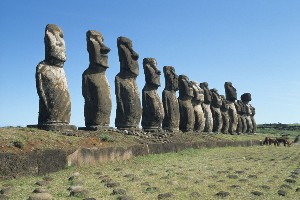 |
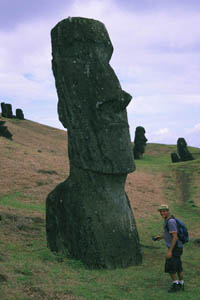 |
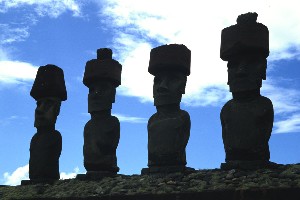 |
Ahu Tongariki, the Largest Ahu on Easter Island |
Huge Half-buried Moai Near Rano Raraku Quarry with Tourist Providing Scale |
Ahu Nau-Nau, Anakena |
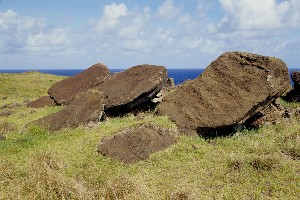 |
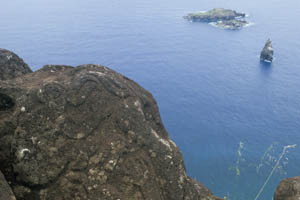 |
Moais Thrown Over During Period of Unrest |
Petroglyph Showing a Birdman Figure, Symbol of the Cult that Followed After the Moai Cult had been Abandoned |
* Tuff is a general name for consolidated ash or tephra (fragmented volcanic ejecta), usually with largest clasts less than 2cm in diameter. The material is erupted and is still hot when it hits the ground, resulting in consolidation and partial welding.